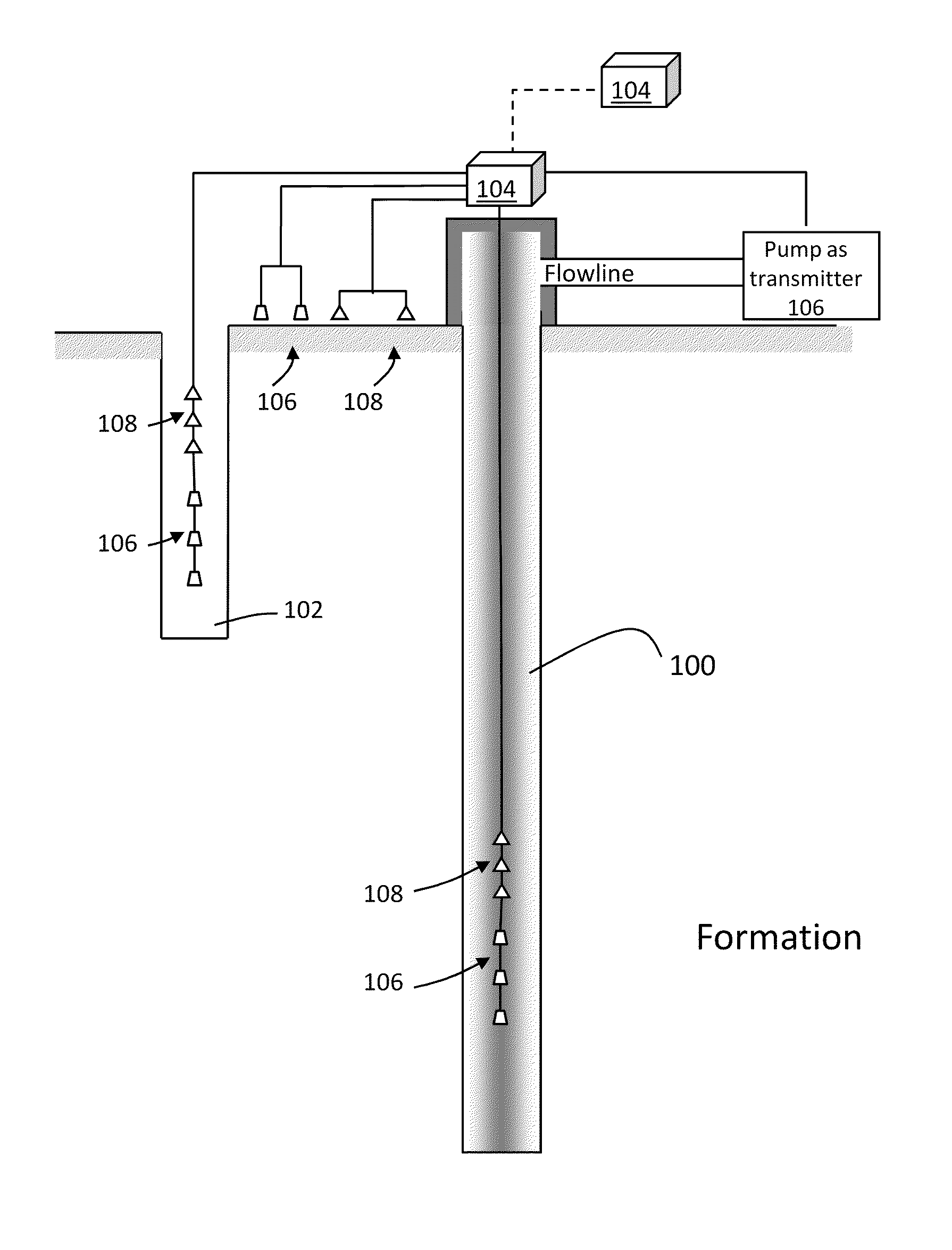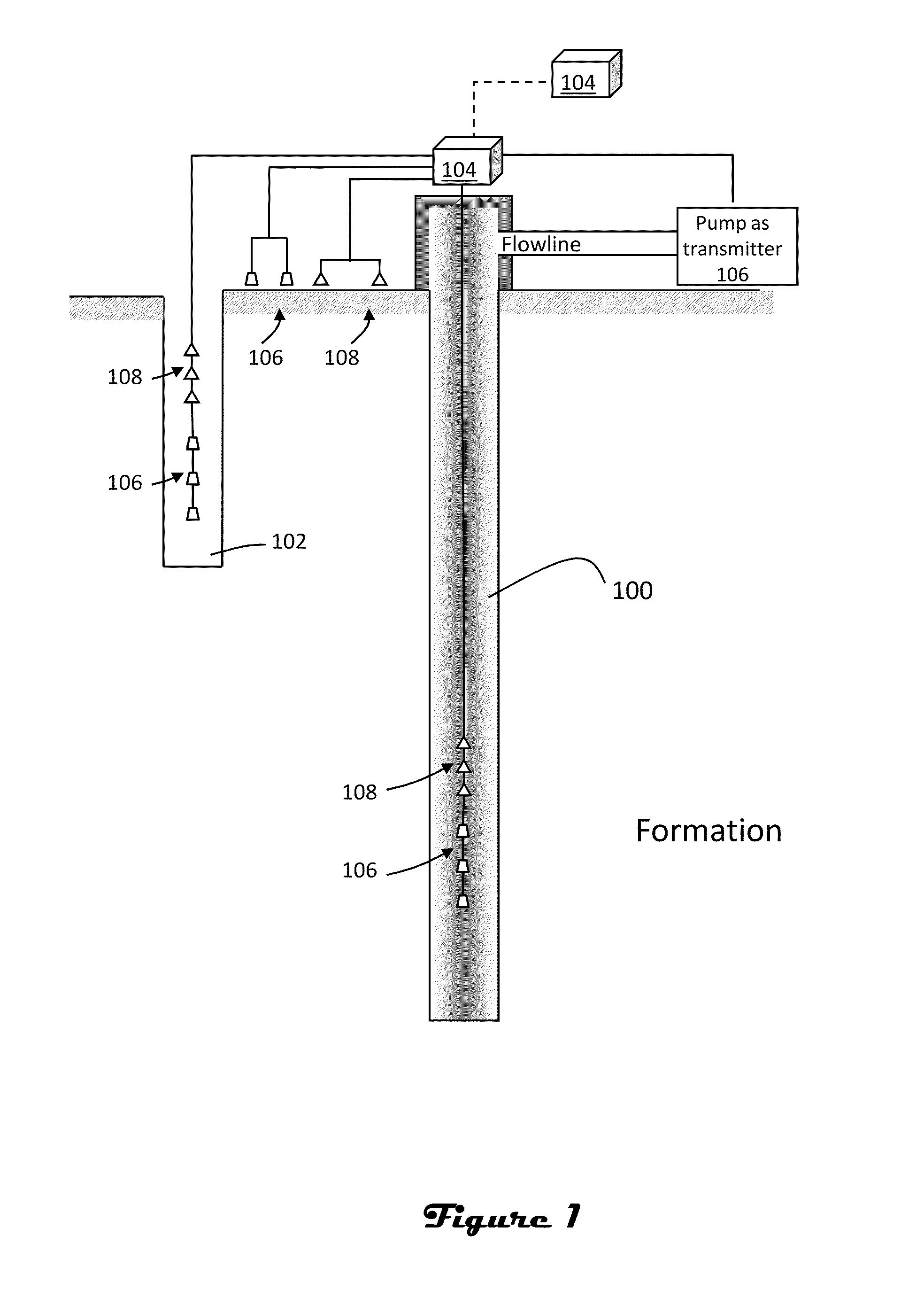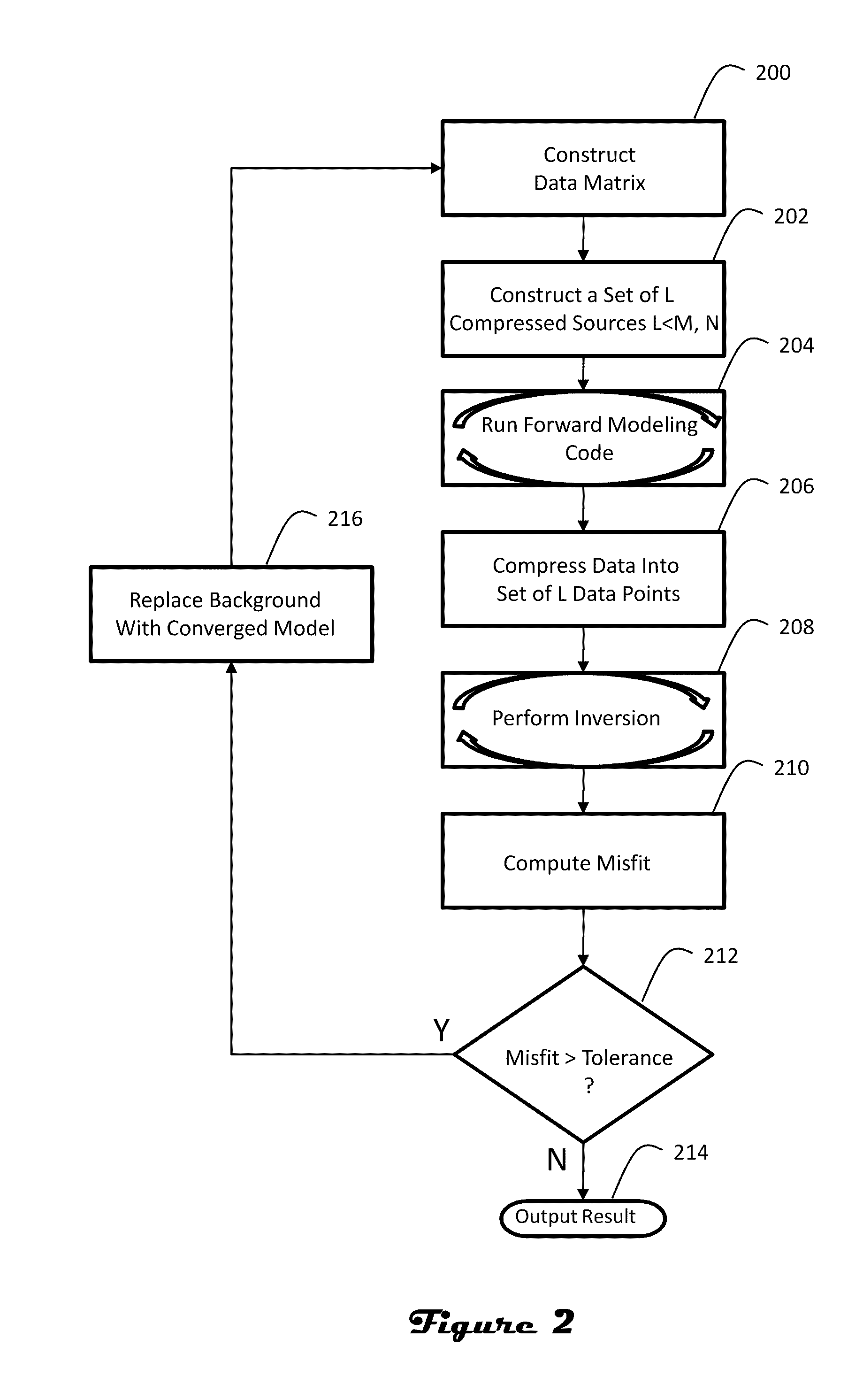Data set inversion using source-receiver compression
a data set and data compression technology, applied in the field of subterranean formation surveillance, can solve problems such as redundancy or lack of sensitivity, and achieve the effect of reducing computational cost and computer memory storage, and reducing the time required to produ
- Summary
- Abstract
- Description
- Claims
- Application Information
AI Technical Summary
Benefits of technology
Problems solved by technology
Method used
Image
Examples
Embodiment Construction
[0009]FIG. 1 illustrates apparatus for surveying a subterranean formation to facilitate recovery of natural resources. An analyzer and control unit 104 is placed in communication with at least one array of excitation sources (transmitters) 106 and at least one array of receivers 108. The invention is not limited to any particular type of excitation source and may be used with excitation sources including but not limited to electromagnetic (EM), seismic, sonic, gravimetric and pressure. Depending on how the formation is to be surveyed, boreholes 100, 102 may be present in the formation. However, the invention is not limited to any particular transmitter-receiver placement and may be used for measurements including but not limited to surface-to-surface, surface-to-borehole, borehole-to-surface, cross-well, and single well. Consequently, arrays transmitters and receivers may be disposed at the surface, in one or more boreholes or wells, or combinations thereof. The analyzer and control...
PUM
 Login to View More
Login to View More Abstract
Description
Claims
Application Information
 Login to View More
Login to View More - R&D
- Intellectual Property
- Life Sciences
- Materials
- Tech Scout
- Unparalleled Data Quality
- Higher Quality Content
- 60% Fewer Hallucinations
Browse by: Latest US Patents, China's latest patents, Technical Efficacy Thesaurus, Application Domain, Technology Topic, Popular Technical Reports.
© 2025 PatSnap. All rights reserved.Legal|Privacy policy|Modern Slavery Act Transparency Statement|Sitemap|About US| Contact US: help@patsnap.com



